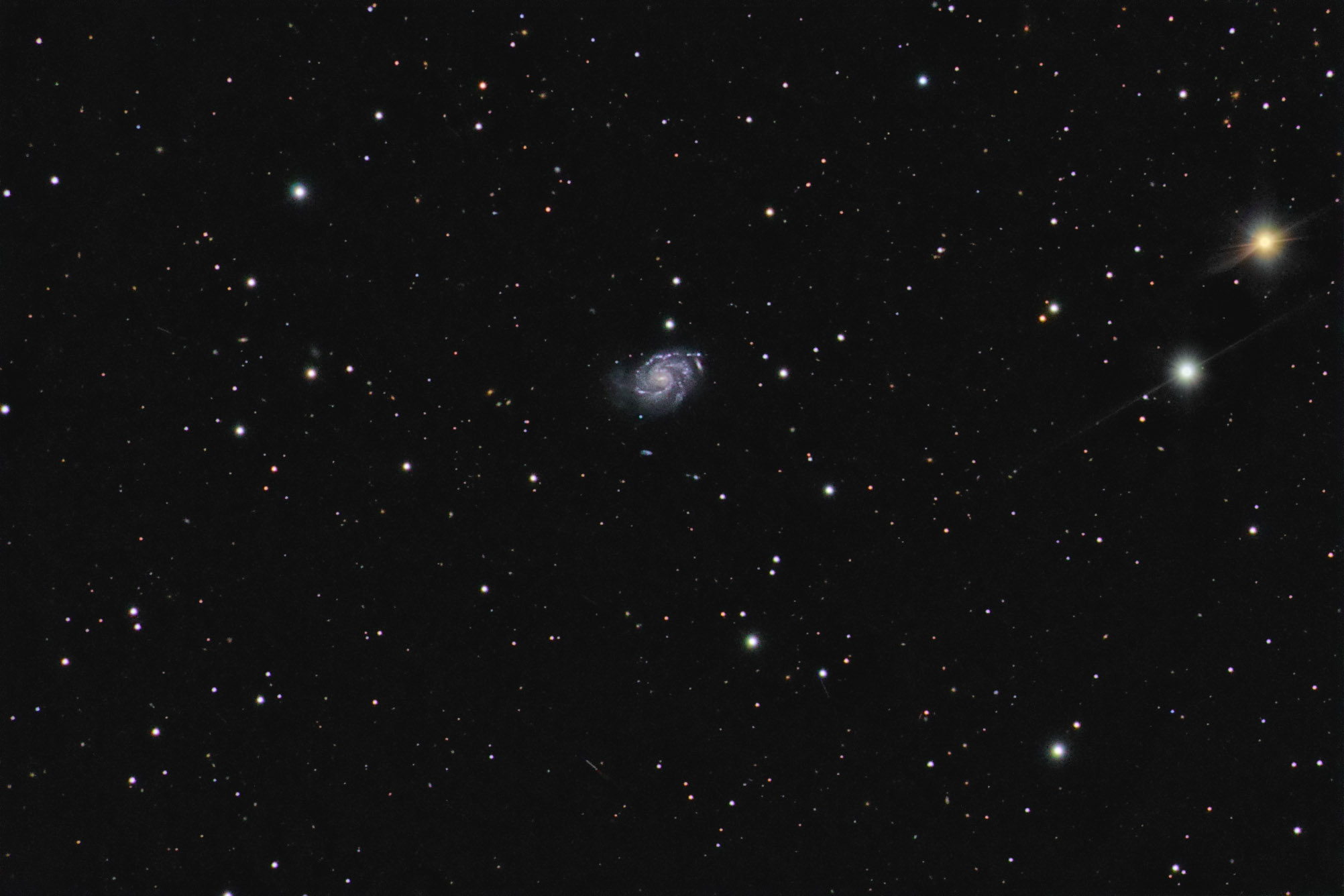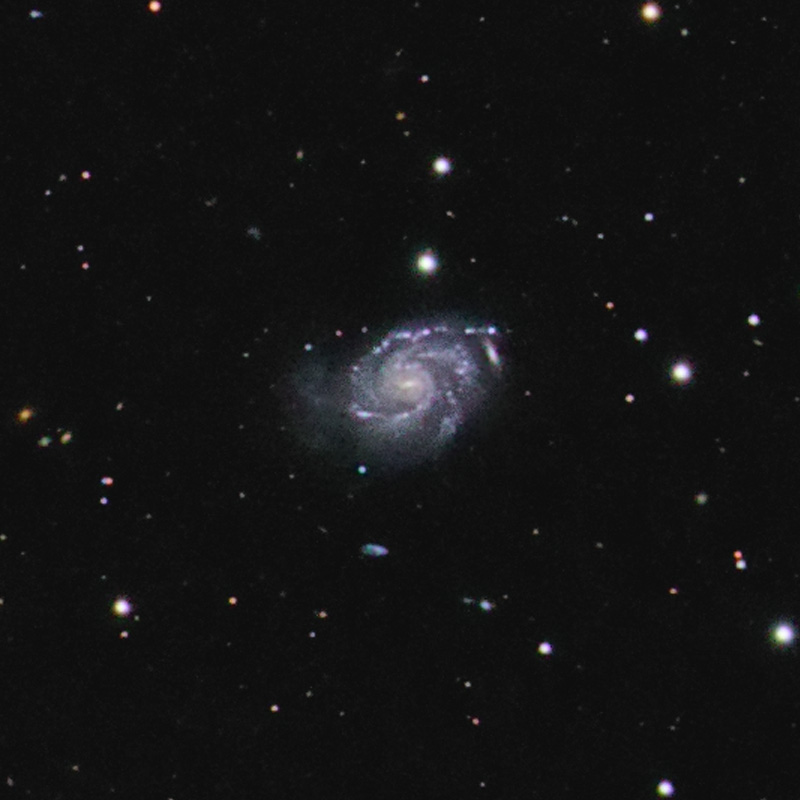| Description | Images |
Object name: ARP068Designation(s): ARP068, Arp 68/NGC 7757 is a Sc spiral galaxy in Pisces at about 120 million light-years. Arp included it in his category Spiral Galaxies with small high surface brightness companions on arms. I'd have put it in his heavy arm category as the "companion" appears to be in the distant background. Arp said the companion was NGC 7756. Lord Rosse who discovered NGC 7756 said this about NGC 7756 "Another neb about 5' sp (NGC 7757)." By "sp" he means south preceding which is south-west. The only object 5' south-west of NGC 7757 is a 12.8 magnitude rather white star. His description is a match for NGC 7757. No one doubts this is a double sighting of NGC 7757. The problem is some sources, like Arp, claim the companion is NGC 7756. This obviously isn't the case. The Kanipe-Webb book gets it right as does NED and the NGC Project. But what is the designation of the companion? It doesn't seem to have one, at least in NED! NED does list an HII region within a couple seconds of arc of its position, however. I can't see it against the distant galaxy. In fact, most of the fuzzy objects in my image don't have any catalog entry that NED shows. Within 15' radius of Arp 68, NED lists only 6 other galaxies, only one of which has a redshift listed. You'll find this galaxy due east (left) of Arp 68 just above a rather bright star. It is the X-ray galaxy GALEX 2690243303817875752 also at 120 million light-years. The very blue galaxy just below Arp 68 and a tad to the east of its center is [HDL96] 407-017. I have nothing much on it. Related Designation(s):2MASS J23484550+0410163, 2MASX J23484552+0410159, ARP 068, ARP068, CGCG 2346.2+0355, CGCG 407-059, HIPASS J2348+04, HOLM 817A, IRAS 23461+0353, IRAS F23461+0353, KUG 2346+038, LGG 482:[G93] 004, LGG 482:[G93] 005, MCG +01-60-037, NGC 7757, NSA 152699, PGC 072491, UGC 12788, UZC J234845.5+041016, VV 407, [HDL96] 407-016, [KR2001] G32, | Permanent link: https://images.mantrapskies.com/catalog/ARP-GALAXIES/ARP068/ARP68L4X10RGB2X10X3R1-ID.JPG |


